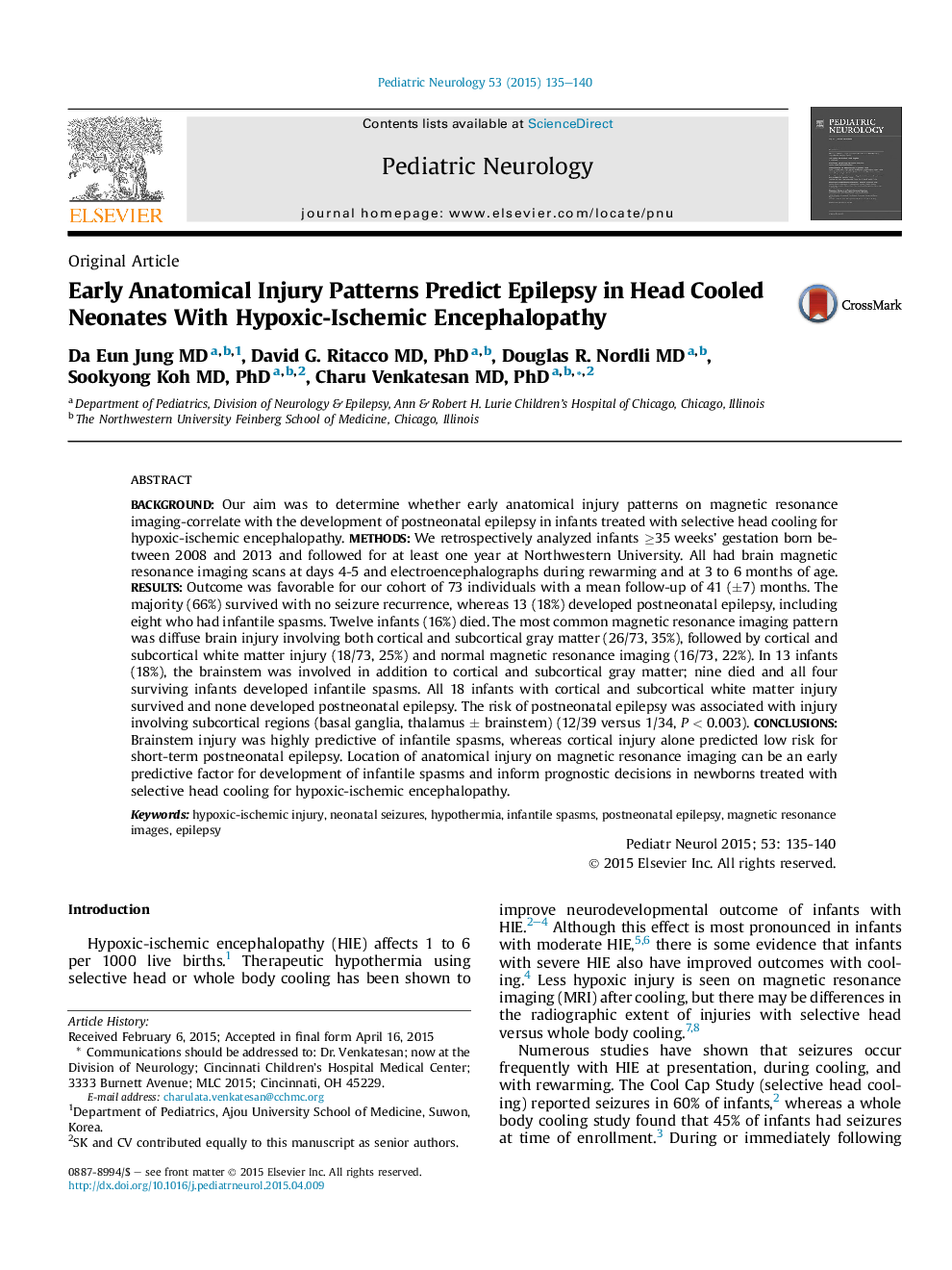| Article ID | Journal | Published Year | Pages | File Type |
|---|---|---|---|---|
| 3084436 | Pediatric Neurology | 2015 | 6 Pages |
BackgroundOur aim was to determine whether early anatomical injury patterns on magnetic resonance imaging-correlate with the development of postneonatal epilepsy in infants treated with selective head cooling for hypoxic-ischemic encephalopathy.MethodsWe retrospectively analyzed infants ≥35 weeks' gestation born between 2008 and 2013 and followed for at least one year at Northwestern University. All had brain magnetic resonance imaging scans at days 4-5 and electroencephalographs during rewarming and at 3 to 6 months of age.ResultsOutcome was favorable for our cohort of 73 individuals with a mean follow-up of 41 (±7) months. The majority (66%) survived with no seizure recurrence, whereas 13 (18%) developed postneonatal epilepsy, including eight who had infantile spasms. Twelve infants (16%) died. The most common magnetic resonance imaging pattern was diffuse brain injury involving both cortical and subcortical gray matter (26/73, 35%), followed by cortical and subcortical white matter injury (18/73, 25%) and normal magnetic resonance imaging (16/73, 22%). In 13 infants (18%), the brainstem was involved in addition to cortical and subcortical gray matter; nine died and all four surviving infants developed infantile spasms. All 18 infants with cortical and subcortical white matter injury survived and none developed postneonatal epilepsy. The risk of postneonatal epilepsy was associated with injury involving subcortical regions (basal ganglia, thalamus ± brainstem) (12/39 versus 1/34, P < 0.003).ConclusionsBrainstem injury was highly predictive of infantile spasms, whereas cortical injury alone predicted low risk for short-term postneonatal epilepsy. Location of anatomical injury on magnetic resonance imaging can be an early predictive factor for development of infantile spasms and inform prognostic decisions in newborns treated with selective head cooling for hypoxic-ischemic encephalopathy.
